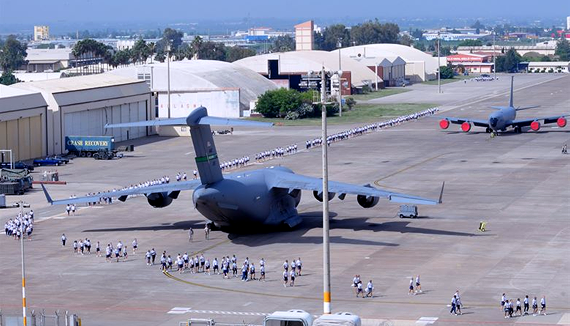October 24, 2019
Miles Pomper
The following is an excerpt of an article published on theconversation.com.

Military aircraft on the tarmac, Source: https://media.defense.gov
As the Syrian crisis pits Turkish troops against former U.S.-allied Kurdish forces, Pentagon officials have been reviewing plans to remove 50 nuclear bombs stored at a U.S air base in Turkey.
A congressional directive to the Pentagon to quickly assess alternative homes for U.S. “personnel and assets” currently stationed at Incirlik Air Base is part of a broader bipartisan bill, still being debated, that proposes sanctions against Turkey. President Donald Trump has been forced to issue public reassurances that the weapons are secure.
During the Cold War, the U.S. stationed B-61 nuclear bombs in Turkey, among other NATO countries. Formally, the U.S. controlled the weapons during peacetime, but the host countries’ forces trained and equipped planes so they could drop the bombs with U.S. support in the case of war. The idea was to deter Soviet ground forces and reassure U.S. allies by making clear that the U.S. would be willing to risk nuclear war to block a Soviet invasion of a country hosting the bombs.
In addition, in the years before the U.S. developed intercontinental ballistic missiles, they presented a way for NATO to demonstrate it could act quickly to respond to a Soviet attack.
The 50 bombs still at Incirlik Air Base, in southern Turkey – and others in Belgium, Germany, Italy and the Netherlands – are the last nuclear remnants of that Cold War strategy. The U.S. began pulling nuclear bombs out of NATO countries after the Cold War ended, and since 2000 has removed 40 bombs from Turkey.
Two decades ago, the Turkish Air Force stopped equipping its planes to drop B-61s. Now the bombs at Incirlik could only be used if U.S. pilots first flew nuclear-weapon-capable planes there to load them up. The bombs were left in Turkey even after a 2016 coup attempt raised serious concerns about their safety. After that event, the U.S. Defense and Energy departments began planning how to remove them – but didn’t actually bring them back to the U.S.
Read more at theconversation.com.
